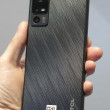Review: Samsung Galaxy S6 Edge+ for Sprint
Sep 23, 2015, 10:00 AM by Eric M. Zeman
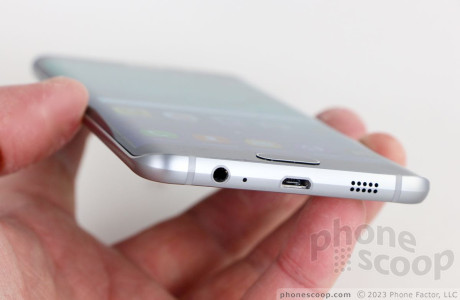
The Galaxy S6 Edge+ is a bigger and better version of the Galaxy S6 Edge. We were pleased with the larger display, improved battery life, excellent camera, and blistering performance. Sprint's version of the phone was particularly impressive in one area. Here is Phone Scoop's full report about this powerful Android smartphone.
Is It Your Type?
The Samsung Galaxy S6 Edge+ is simply a larger S6 Edge. If the S6 Edge wasn't big enough for you and you're anxious for more screen real estate, the Edge+ fits the bill. This ultra-premium handset is an attractive option if the Note 5, with its stylus, isn't quite your style.
Note: Since the Galaxy S6 Edge+ is practically identical between carriers, significant portions of this review have been carried over from our earlier review of the Galaxy S6 Edge+ for Verizon. Of course we did fully test this Sprint version and update the relevant sections.
Body
The Galaxy S6 Edge+ is an ambitious smartphone from Samsung, but only slightly more so than the original S6 Edge. The Edge+ takes the dual-curved screen of the Edge and expands the display from 5.1 inches to 5.7 inches. It embodies the phrase "there's more of it to love." It shares almost every feature with the Note 5, save for the curvy glass and stylus.
The design features a metal frame sandwiched between two glass panels. The materials and build quality are second-to-none. I appreciate the attention to detail that's evident in the shape of the aluminum sides as well as the curves of the glass. The seams are fitted together flawlessly. The S6 Edge+ exudes style and class in every way, and will be a fine companion if you're dressed up for a night on the town.
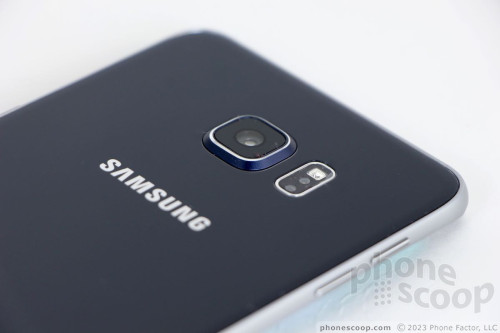
Of course, it's darned big. The S6 Edge+'s dimensions are nearly identical to those of the Note 5. It's 1mm taller, but 0.7mm thinner. The Edge+ is significantly lighter than the Note 5 (5.4 ounces compared to 6.03 ounces), perhaps because the frame is thinner and the Edge+ doesn't have a stylus. I noticed immediately how much lighter it is. It should go without saying the Edge+ is significantly taller and wider than the normal S6 Edge.
Given its size, Samsung did as well as it could to make the phone comfortable to hold and use. When comparing the Note 5 to the Edge+, I'd swear to you Samsung simply reversed the frame. Where the Note 5 has a flat front and curved back, the Edge+ has a flat back and curved front. The effect is to make the Edge+ feel wider than the Note 5, even when it is technically 0.02 inches narrower. The aluminum frame is thin along the side edges and digs into your skin a bit. The Note 5 is more comfortable to hold and use, in my opinion.
The entire phone is slippery as hell; the finish on the Gorilla Glass 4 panels is smooth, which means the phone will easily slip into — and out of — your pockets. Some people may worry enough about the glass to protect it with a case. Adding a case will hide the phone's pleasing design and make the phone even larger.
The front of the phone carries forward design traits we've seen on Samsung phones for years. The panel is mostly display with thin side bezels and thicker top and bottom bezels to house the usual set of components. Above the screen, for example, are two sensors, the chrome-accented speaker grille, and the user-facing camera. Below the screen, you'll see the oblong home screen button / fingerprint reader, which is flanked by capacitive multi-tasking and back keys. The home button has an accented rim, which helps it stand out visually, and the physical profile is excellent. I found the button easy to find and use.
The volume buttons are on the left. They are two separate keys, rather than a single toggle. They have excellent profiles, travel, and feedback. The screen lock button, on the right, has similarly pleasing characteristics. I do wish the S6 Edge+ had a dedicated camera button, but there's not much room for one.
The SIM card tray is on the top edge. The bottom edge holds the stereo headphone jack, the micro USB port, and the grill for the speakerphone. There's no IR port, unlike the smaller S6 Edge. The Edge+ does not have a stylus either; that's reserved for the Note 5.
The camera module protrudes noticeably from the rear panel. It has not one, but two (!) chrome accents, which, oddly, draw attention to the camera bump and its size. The flash and heart rate sensor are packaged together in a separate module to the right of the camera, but they are flush with the surface.
Many Samsung fans were not happy with the company's decision to dump removable rear covers, swappable batteries, and swappable memory cards on the Galaxy S6 and S6 Edge. Unfortunately, Samsung made the same decision (mistake?) with the S6 Edge+. The battery is sealed in tight, and there's no memory card slot. To help offset that loss a bit, the S6 Edge+ is compatible with most wireless charging pads thanks to support for multiple wireless charging standards. What's more, it includes rapid charging and rapid wireless charging, with the proper (Samsung) pad.
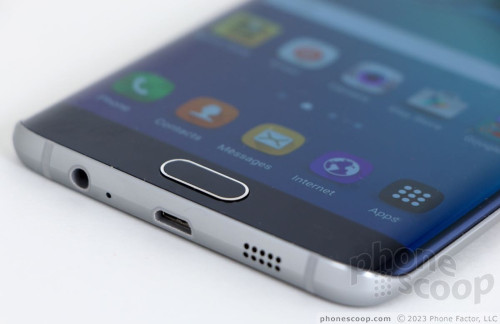
The S6 Edge+ is an incredible piece of hardware, despite its shortcomings, and stands near the top of the big-screened smartphone mountain. It may be somewhat less comfortable to use than the Note 5, but the design is more appealing to me, and the drop in weight is welcome indeed. It's an impressive smartphone.
Screen
What's not to love about a 5.7-inch quad-HD display? Damn, the S6 Edge+'s screen kicks butt. It's amazing in every way. Samsung uses Super AMOLED tech for its screens (as opposed to LCD), and the S6 Edge+'s display is a winner across the board. It's pixel-rich, bright, colorful, contrasty, and flat-out incredible. I was able to use it indoors and out with no problem. I saw minimal brightness drop when the phone was tilted side to side, and colors remained accurate. Quite honestly, the S6 Edge+'s screen is the best available on a smartphone right now.
The only issue might be viewing angles. Where the Note 5's screen is flat, the Edge+'s screen is curved along the sides. The curves reduce the percentage of the screen you can see when the phone is held at an angle; you cannot see what's on the far edge, which curves out of sight. It's not severe, but it is noticeable. Moreover, there's a bit of optical distortion on the side edges when the screen is viewed head-on. It's only noticeable when you're looking at a fully white screen; you'll see the side edges look a wee bit bluer than the rest of the screen.
Signal
The Edge+ performed above par when compared to other devices I've tested on Sprint's network in and around New York City. It was faster to connect to LTE when available, and held onto Sprint's LTE network longer, thanks in part to tri-band LTE that's fully compatible with Sprint's “Spark” network. I was easily able to make calls even under the worst signal conditions, and data pushed through at times when the phone showed no signal at all. Call handoffs to cell towers when traveling on the highway were smooth, and the phone never dropped a conversation. Data speeds over Sprint Spark were fairly quick. The Edge+ did great on Sprint's network all around.
Sound
I've tested the AT&T and Verizon variants of the Edge+, but the Sprint takes the cake when it comes to call quality; it easily beats the pants off its competitors. Not only is the earpiece loud, but clarity is excellent and voices sound warm and present. I had no trouble hearing calls in noisy places, like the mall food court during lunch hour or a school parking lot at dismissal time. Those I spoke to through the Edge+ said I sounded really good.
The speakerphone wasn't quite as impressive. Volume was certainly loud, but clarity suffered a bit due to distortion. Even so, I was able to maintain conversations in moving cars without trouble. The Sprint Edge+'s speakerphone also outperformed AT&T and Verizon's Edge+ versions.
(None of the phone calls conducted on any of the Edge+ variants were HD Voice; they were all standard cellular calls. Naturally HD Voice should provide even better quality when calling people with compatible Sprint phones.)
Ringtones and alerts were able to get my attention the majority of the time. The vibrate alert delivered a satisfying jolt when inbound messages arrived.
Whether you use Google's Play Music app, Samsung's Milk Music app, or the stand-alone MP3 player, music sounds good when pumped through the Edge+'s stereo headphone jack. I have no complaints on that front.
Battery
The Edge+'s glassy design necessitated the sealed-in battery. In my experience with the phone, it was able to provide a bit more than a full waking day of power consistently, but I was hoping for better. Big phones should have big batteries that provide at least a day and a half of usable power. The Edge+ doesn't deliver on that front, although it should get people through a single day without trouble. It performed on par with the AT&T and Verizon variants of the Edge+.
Samsung sort of makes up for the power-hungry nature of the phone with rapid charging and rapid wireless charging. I tested the rapid charging via USB and found the 3,000 mAh battery could ramp up from 0% charge to 100% charge in less than 90 minutes. That's pretty quick. Of course, the more you charge it, the sooner the battery will lose its ability to hold a charge.
The S6 Edge+ also includes Samsung's Power Saver and Ultra Power Saver modes. These do make a difference if you run into trouble. The first option tones down a few features and doesn't crimp the phone's performance too much. For example, it will limit the CPU a bit, turn down brightness, turn off the key backlights, and put the display to sleep faster. The second takes a more aggressive approach and kills off all but the basics. It strips the UI down to the bare essentials, goes grey-scale, and prioritizes only key functions, such as calling and messaging. These will definitely help you save power in a pinch.
Bluetooth, GPS, NFC, WiFi
I was very pleased with the S6 Edge+'s wireless performance all around. The Bluetooth radio did a great job as far as pairing with other devices was concerned. Call quality was not the best, especially via my car's hands-free system. I'd call the experience noisy. Music pushed to aptX-compatible Bluetooth headsets sounded fantastic.
The GPS, NFC, and WiFi radios all functioned perfectly, I didn't have any problems with them. I was impressed with the speed of the GPS radio, which pinpointed me to within 10 feet in just a couple of seconds on a consistent basis. The NFC radio allowed me to quickly pair the phone with other hardware and the WiFi radio was speedy for use in browsing the web.
Comments
No messages


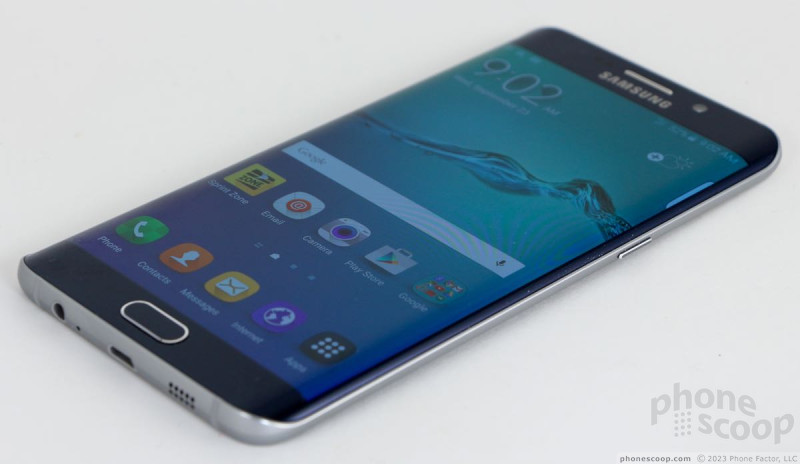














 Review: Samsung Galaxy S6 Edge+ for Verizon Wireless
Review: Samsung Galaxy S6 Edge+ for Verizon Wireless
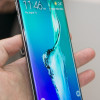 Hands On with the Samsung Galaxy Note 5 and S6 Edge+
Hands On with the Samsung Galaxy Note 5 and S6 Edge+
 Samsung Galaxy Note 5 and S6 Edge+ Earn Updates from Verizon
Samsung Galaxy Note 5 and S6 Edge+ Earn Updates from Verizon
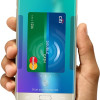 Samsung Pay Launches In the US
Samsung Pay Launches In the US
 Samsung Updates Note Series with Metal and Glass Design
Samsung Updates Note Series with Metal and Glass Design
 Samsung Galaxy S6 edge+ (CDMA)
Samsung Galaxy S6 edge+ (CDMA)



